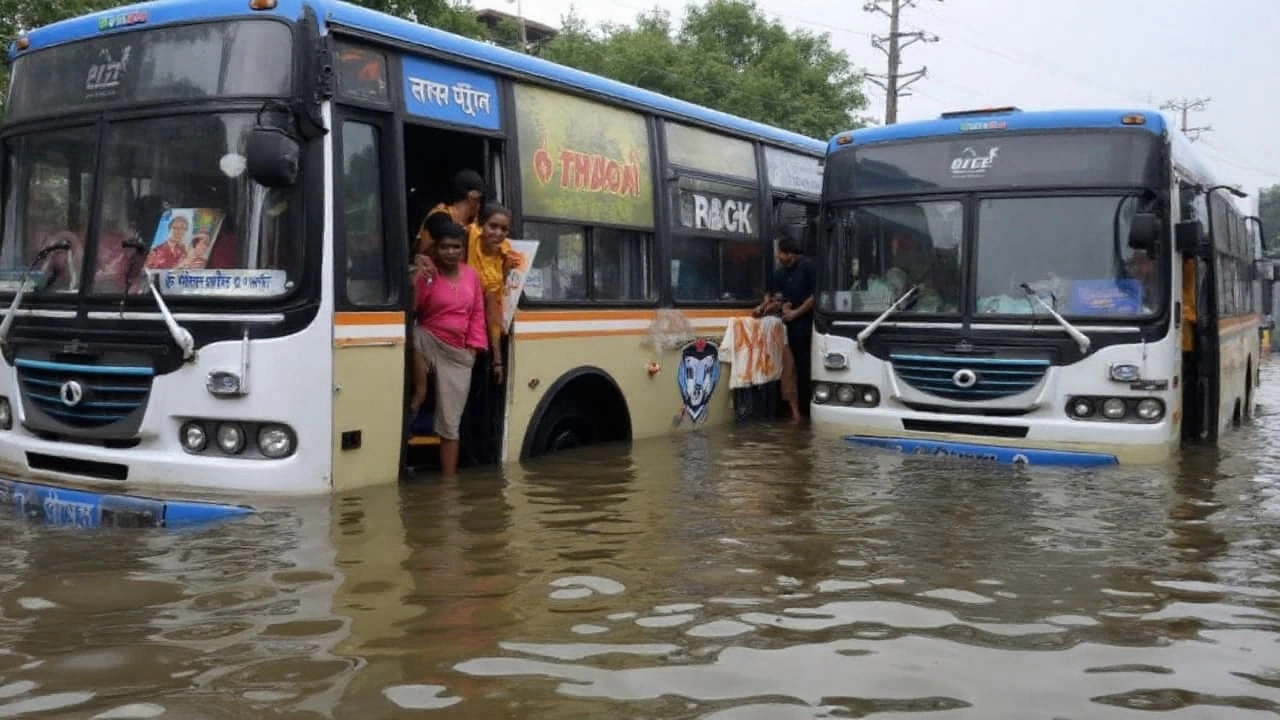Kolkata Flooding: Latest Updates and What You Need to Know
Heavy rains have turned many parts of Kolkata into a waterlogged maze. Streets that were busy yesterday are now swamped, commuters are stuck, and families are scrambling for dry ground. If you live in the city or need to travel through it, you’ll want the most recent info on water levels, road closures, and where help is available. Below you’ll find a quick snapshot of what’s happening, why it’s happening, and what you can do right now to stay safe.
Why Kolkata floods?
Kolkata sits on a low‑lying delta, so it naturally collects runoff from the Hooghly and its tributaries. When the monsoon brings back‑to‑back downpours, the city’s drainage system can’t keep up. Add clogged drains, illegal construction on riverbanks, and a few weak embankments, and the water has nowhere to go but onto the streets. This year, the AccuWeather model predicts above‑average rainfall for the next ten days, which means more water waiting to spill over. Experts also point out that climate‑change‑driven extreme events are making such heavy downpours more common, so the problem isn’t likely to disappear anytime soon.
How to stay safe during floods
First, keep an eye on local alerts. The Kolkata Municipal Corporation pushes notifications via SMS and its official app; they’ll tell you which neighborhoods are declared flood‑prone and when rescues are underway. Second, avoid walking or driving through standing water—just a few inches can hide open drains or electrical hazards. If you must travel, stick to main roads that are cleared first and carry a waterproof phone case. Third, protect your home by moving valuables to higher shelves and sealing doors with sandbags if you have them. Finally, know where the nearest relief centers are; many schools and community halls have been turned into shelters with food, blankets, and medical aid.
For those looking to help, volunteers are needed at distribution points, and donations of dry clothes, bottled water, and non‑perishable food are always welcome. Most NGOs have set up quick‑response boxes on their websites, so you can contribute without leaving your house. Remember, even a small amount of help can make a big difference when families are stuck for days.
In summary, Kolkata flooding this season is a mix of geography, infrastructure gaps, and increasingly intense weather. Staying updated, avoiding risky routes, and preparing a few essential items can cut down the stress for you and your neighbors. Keep checking this page for live updates, government notices, and practical tips as the situation evolves. Stay dry, stay informed, and look out for each other.

Kolkata Flooding 2025: Six Hours of Record Rain Submerged India's Cultural Capital
On September 23, 2025, Kolkata was hit by an unprecedented downpour that flooded streets, schools and transport hubs in a matter of hours. The deluge, coinciding with the start of Durga Puja, claimed 8‑12 lives and left dozens injured or missing. Rainfall totals topped 330 mm in some neighborhoods, overwhelming the city’s drainage. Closed lock gates compounded the problem, stopping natural outflow to the Hooghly River. The disaster has sparked fresh debate on climate resilience and urban planning in Indian metros.